Attractions · Europe · Food and Drink · Going Out · Regions · Spain · Travel Miscellany · Western Europe
5 unexpected reasons to visit Gran Canaria
Gran Canaria was the most delightful surprise! This lovely island has Spring temperatures all year round and is full of colour and vibrancy. The fantastic quality of the food and wine was perhaps the biggest surprise for me – locally grown ingredients, unbelievably fresh fish and far too drinkable wines that are only available on the island. Move past the cliches and get ready to discover the next foodie travel destination!
 1. The markets
Markets are held most days across the island in various locations. The capital, Las Palmas de Gran Canaria, is the home of two of the most famous permanent markets – Vegueta Market and Mercado del Puerto Las Palmas. Vegueta is a fresh produce only market and closes by 2pm. Mercado del Puerto is a mix of produce and restaurants/bars and is open every day.
1. The markets
Markets are held most days across the island in various locations. The capital, Las Palmas de Gran Canaria, is the home of two of the most famous permanent markets – Vegueta Market and Mercado del Puerto Las Palmas. Vegueta is a fresh produce only market and closes by 2pm. Mercado del Puerto is a mix of produce and restaurants/bars and is open every day.
 In the south of the island, there is one market which moves around the different towns of the region. On Saturdays, it is known as the San Fernando market and is held in Maspalomas. Tuesday the location is Arguienta. The big one is the Friday version in Mogan which has the largest number of vendors.
In the south of the island, there is one market which moves around the different towns of the region. On Saturdays, it is known as the San Fernando market and is held in Maspalomas. Tuesday the location is Arguienta. The big one is the Friday version in Mogan which has the largest number of vendors.
 On Sundays, the best place for markets is the small towns of the Gran Canaria mountains. Teror has the largest of these markets. This is a lovely little hill town filled with character. The market has all the use fresh food vendors as well as ready to eat food, clothing, hats, dancing and everything else you could possibly think of! The market essentially takes over the town with vendors dotted all over the main thoroughfare.
On Sundays, the best place for markets is the small towns of the Gran Canaria mountains. Teror has the largest of these markets. This is a lovely little hill town filled with character. The market has all the use fresh food vendors as well as ready to eat food, clothing, hats, dancing and everything else you could possibly think of! The market essentially takes over the town with vendors dotted all over the main thoroughfare.
 2. The wine
The combination of the volcanic soil and temperature variety across the mountainous landscape give Gran Canaria wines a rich flavour. They do not export any of their wine as they do not produce in sufficient volumes to hit the price points required. So do make sure you try as much as possible while you are there!
2. The wine
The combination of the volcanic soil and temperature variety across the mountainous landscape give Gran Canaria wines a rich flavour. They do not export any of their wine as they do not produce in sufficient volumes to hit the price points required. So do make sure you try as much as possible while you are there!
 The Listan grape is the most common and is used for both white and red wines. As you would expect the best wines come from the higher mountain areas. I was pleasantly surprised by the reds. They tended to have a more medium bodied texture and were far more flavoursome than I expected – more shiraz/malbec vs say pinot noir.
The Listan grape is the most common and is used for both white and red wines. As you would expect the best wines come from the higher mountain areas. I was pleasantly surprised by the reds. They tended to have a more medium bodied texture and were far more flavoursome than I expected – more shiraz/malbec vs say pinot noir.
 There are several wineries on the island that welcome visitors. One of the largest is Bodega Las Tirajanas which is located a little south of the centre of the island. This is a great one to visit if you are staying in the South.
If you are staying in Las Palmas I highly recommend visiting Bodega Los Lirios. Visits are by appointment only but they are well worth it. The winery itself is lovely and they only produce what they feel is the best wine. When I visited they only had one red available – but gosh it was absolutely delicious and a bottle came home with me!
3. The dunes
Almost half of Gran Canaria is protected by UNESCO as a Biosphere Reserve. One of the most stunning areas of natural beauty to visit is the Maspalomas Dunes. I imagine that one of the reasons that Gran Canaria has so many stunning beaches is that much of the coast used to look like these dunes. This is one of the rare parts of the island where the dunes have been kept as such.
There are several wineries on the island that welcome visitors. One of the largest is Bodega Las Tirajanas which is located a little south of the centre of the island. This is a great one to visit if you are staying in the South.
If you are staying in Las Palmas I highly recommend visiting Bodega Los Lirios. Visits are by appointment only but they are well worth it. The winery itself is lovely and they only produce what they feel is the best wine. When I visited they only had one red available – but gosh it was absolutely delicious and a bottle came home with me!
3. The dunes
Almost half of Gran Canaria is protected by UNESCO as a Biosphere Reserve. One of the most stunning areas of natural beauty to visit is the Maspalomas Dunes. I imagine that one of the reasons that Gran Canaria has so many stunning beaches is that much of the coast used to look like these dunes. This is one of the rare parts of the island where the dunes have been kept as such.
 The dunes literally turn into the Maspalomas beach. Walking along the beach will take you to the dunes. The area covers 1000 acres. There are paths that can be walked through the dunes but do be careful to take water etc if you are walking without a guide.
4. The food
I’ll start with the fruits and vegetables – which are virtually all locally grown in the rich volanic soil of Gran Canaria. Tomatoes are the most important crop on the island closely followed by the potato. The tropical fruits are where you can really taste the difference – particularly for me in the pineapples which were so sweet.
The avocados of Mogan are well known for their deeper taste. This is due to salt levels in the soil. These avocadoes can literally be enjoyed with nothing on them due to the flavour packed in.
The dunes literally turn into the Maspalomas beach. Walking along the beach will take you to the dunes. The area covers 1000 acres. There are paths that can be walked through the dunes but do be careful to take water etc if you are walking without a guide.
4. The food
I’ll start with the fruits and vegetables – which are virtually all locally grown in the rich volanic soil of Gran Canaria. Tomatoes are the most important crop on the island closely followed by the potato. The tropical fruits are where you can really taste the difference – particularly for me in the pineapples which were so sweet.
The avocados of Mogan are well known for their deeper taste. This is due to salt levels in the soil. These avocadoes can literally be enjoyed with nothing on them due to the flavour packed in.
 As you would expect on an island the seafood is fantastic. I particularly enjoyed the local white fishes and the tuna. The island is also well known for honey, almonds, olive oil and coffee.
As you would expect on an island the seafood is fantastic. I particularly enjoyed the local white fishes and the tuna. The island is also well known for honey, almonds, olive oil and coffee.
 Finally, the Mojo flavoring is used in many dishes on the island. Each restaurant/home seems to have their own unique recipe with a large variety in the level of spice. I found it quite similar to a much more flavoursome paprika. This is a great item to purchase as a souvenir as I have found myself using it often in cooking at home!
5. Las Palmas Old Quarter: Vegueta
Vegueta is the old quarter of Las Palmas de Gran Canaria, the capital of the island. Its historic buildings have been standing for more than five centuries. The streets of the quarter were all constructed on angles. It is difficult to see streets until you are upon them and then it is even more difficult to see the end of the street.
Finally, the Mojo flavoring is used in many dishes on the island. Each restaurant/home seems to have their own unique recipe with a large variety in the level of spice. I found it quite similar to a much more flavoursome paprika. This is a great item to purchase as a souvenir as I have found myself using it often in cooking at home!
5. Las Palmas Old Quarter: Vegueta
Vegueta is the old quarter of Las Palmas de Gran Canaria, the capital of the island. Its historic buildings have been standing for more than five centuries. The streets of the quarter were all constructed on angles. It is difficult to see streets until you are upon them and then it is even more difficult to see the end of the street.
 The reason for this is that the town was designed to evade potential invaders. This type of layout made the quarter confusing for anyone who was unfamiliar with it and gave the locals a considerable advantage. As a small island invasion was a common problem for Las Palmas throughout history.
The reason for this is that the town was designed to evade potential invaders. This type of layout made the quarter confusing for anyone who was unfamiliar with it and gave the locals a considerable advantage. As a small island invasion was a common problem for Las Palmas throughout history.
 Wondering these twisty streets is part of the charm of the capital. The highlight of the visit for me was the Vegueta Market. The market opened in 1858 and is thriving today. I was so impressed by the care and attention the stall holders put into the appearance of their goods. Such high quality merchandising would be at home in the Harrods food hall!
Amanda OBrien is Owner of The Boutique Adventurer. The Boutique Adventurer focusses on luxury adventures in emerging destinations that end with a high thread count on the sheets in the evening.
If you would like to be a guest blogger on A Luxury Travel Blog in order to raise your profile, please contact us.
Wondering these twisty streets is part of the charm of the capital. The highlight of the visit for me was the Vegueta Market. The market opened in 1858 and is thriving today. I was so impressed by the care and attention the stall holders put into the appearance of their goods. Such high quality merchandising would be at home in the Harrods food hall!
Amanda OBrien is Owner of The Boutique Adventurer. The Boutique Adventurer focusses on luxury adventures in emerging destinations that end with a high thread count on the sheets in the evening.
If you would like to be a guest blogger on A Luxury Travel Blog in order to raise your profile, please contact us.
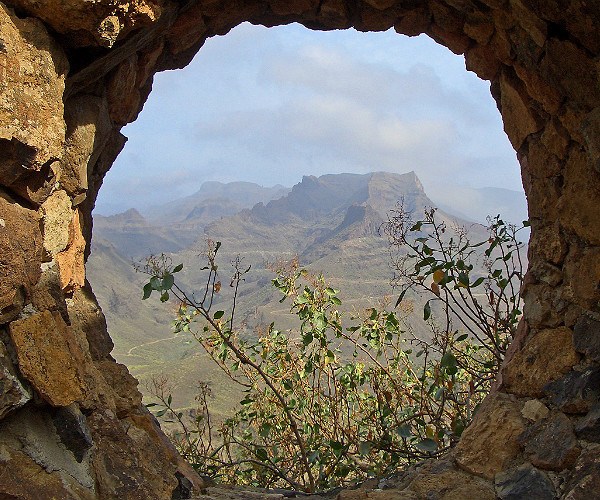 1. The markets
Markets are held most days across the island in various locations. The capital, Las Palmas de Gran Canaria, is the home of two of the most famous permanent markets – Vegueta Market and Mercado del Puerto Las Palmas. Vegueta is a fresh produce only market and closes by 2pm. Mercado del Puerto is a mix of produce and restaurants/bars and is open every day.
1. The markets
Markets are held most days across the island in various locations. The capital, Las Palmas de Gran Canaria, is the home of two of the most famous permanent markets – Vegueta Market and Mercado del Puerto Las Palmas. Vegueta is a fresh produce only market and closes by 2pm. Mercado del Puerto is a mix of produce and restaurants/bars and is open every day.
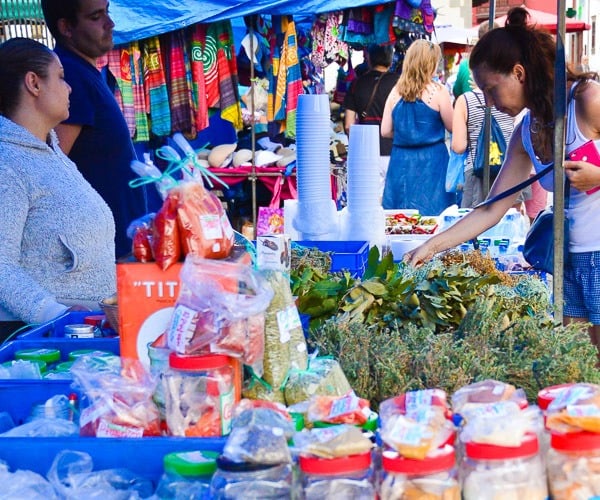 In the south of the island, there is one market which moves around the different towns of the region. On Saturdays, it is known as the San Fernando market and is held in Maspalomas. Tuesday the location is Arguienta. The big one is the Friday version in Mogan which has the largest number of vendors.
In the south of the island, there is one market which moves around the different towns of the region. On Saturdays, it is known as the San Fernando market and is held in Maspalomas. Tuesday the location is Arguienta. The big one is the Friday version in Mogan which has the largest number of vendors.
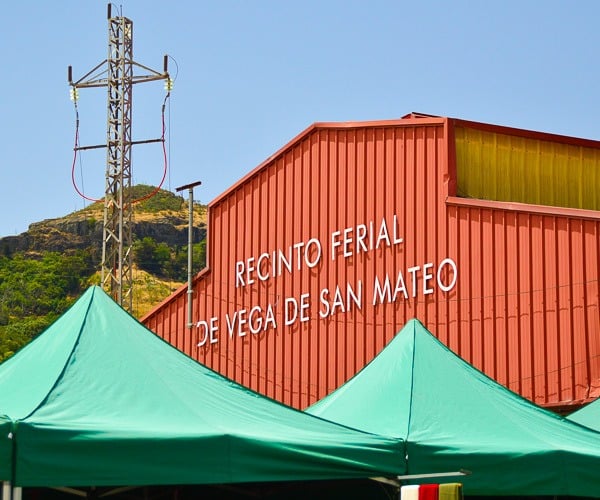 On Sundays, the best place for markets is the small towns of the Gran Canaria mountains. Teror has the largest of these markets. This is a lovely little hill town filled with character. The market has all the use fresh food vendors as well as ready to eat food, clothing, hats, dancing and everything else you could possibly think of! The market essentially takes over the town with vendors dotted all over the main thoroughfare.
On Sundays, the best place for markets is the small towns of the Gran Canaria mountains. Teror has the largest of these markets. This is a lovely little hill town filled with character. The market has all the use fresh food vendors as well as ready to eat food, clothing, hats, dancing and everything else you could possibly think of! The market essentially takes over the town with vendors dotted all over the main thoroughfare.
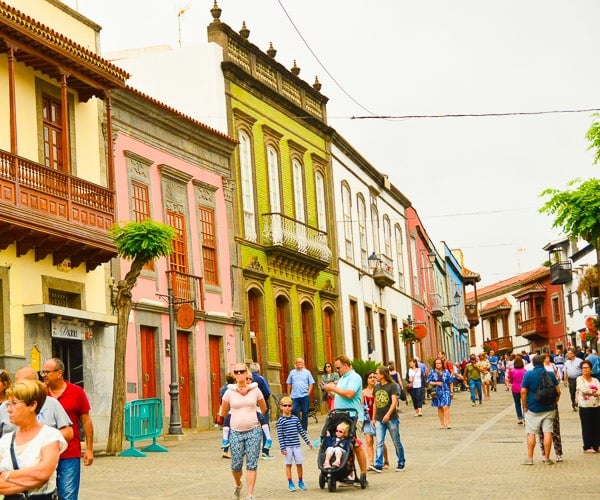 2. The wine
The combination of the volcanic soil and temperature variety across the mountainous landscape give Gran Canaria wines a rich flavour. They do not export any of their wine as they do not produce in sufficient volumes to hit the price points required. So do make sure you try as much as possible while you are there!
2. The wine
The combination of the volcanic soil and temperature variety across the mountainous landscape give Gran Canaria wines a rich flavour. They do not export any of their wine as they do not produce in sufficient volumes to hit the price points required. So do make sure you try as much as possible while you are there!
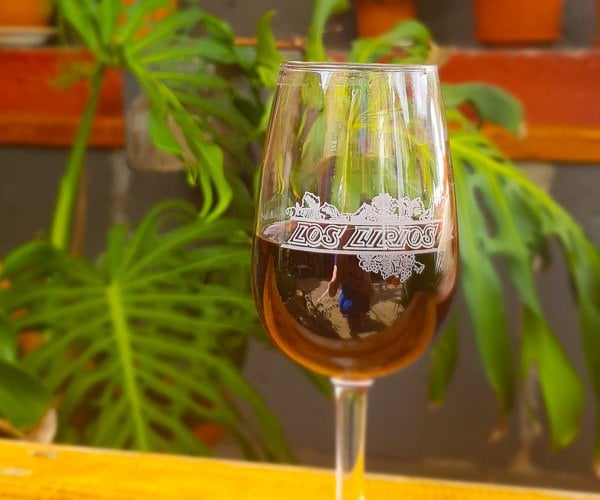 The Listan grape is the most common and is used for both white and red wines. As you would expect the best wines come from the higher mountain areas. I was pleasantly surprised by the reds. They tended to have a more medium bodied texture and were far more flavoursome than I expected – more shiraz/malbec vs say pinot noir.
The Listan grape is the most common and is used for both white and red wines. As you would expect the best wines come from the higher mountain areas. I was pleasantly surprised by the reds. They tended to have a more medium bodied texture and were far more flavoursome than I expected – more shiraz/malbec vs say pinot noir.
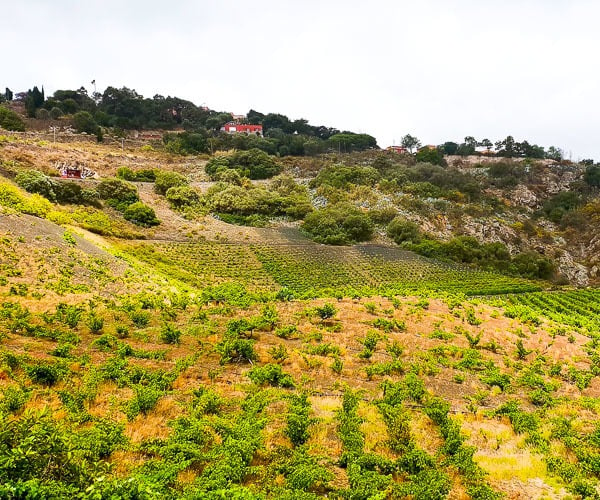 There are several wineries on the island that welcome visitors. One of the largest is Bodega Las Tirajanas which is located a little south of the centre of the island. This is a great one to visit if you are staying in the South.
If you are staying in Las Palmas I highly recommend visiting Bodega Los Lirios. Visits are by appointment only but they are well worth it. The winery itself is lovely and they only produce what they feel is the best wine. When I visited they only had one red available – but gosh it was absolutely delicious and a bottle came home with me!
3. The dunes
Almost half of Gran Canaria is protected by UNESCO as a Biosphere Reserve. One of the most stunning areas of natural beauty to visit is the Maspalomas Dunes. I imagine that one of the reasons that Gran Canaria has so many stunning beaches is that much of the coast used to look like these dunes. This is one of the rare parts of the island where the dunes have been kept as such.
There are several wineries on the island that welcome visitors. One of the largest is Bodega Las Tirajanas which is located a little south of the centre of the island. This is a great one to visit if you are staying in the South.
If you are staying in Las Palmas I highly recommend visiting Bodega Los Lirios. Visits are by appointment only but they are well worth it. The winery itself is lovely and they only produce what they feel is the best wine. When I visited they only had one red available – but gosh it was absolutely delicious and a bottle came home with me!
3. The dunes
Almost half of Gran Canaria is protected by UNESCO as a Biosphere Reserve. One of the most stunning areas of natural beauty to visit is the Maspalomas Dunes. I imagine that one of the reasons that Gran Canaria has so many stunning beaches is that much of the coast used to look like these dunes. This is one of the rare parts of the island where the dunes have been kept as such.
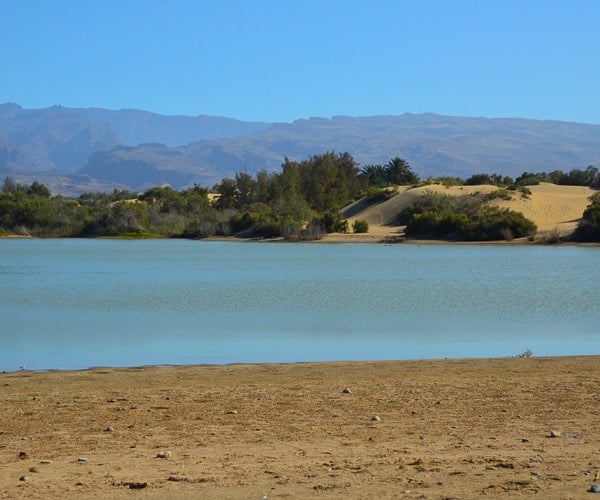 The dunes literally turn into the Maspalomas beach. Walking along the beach will take you to the dunes. The area covers 1000 acres. There are paths that can be walked through the dunes but do be careful to take water etc if you are walking without a guide.
4. The food
I’ll start with the fruits and vegetables – which are virtually all locally grown in the rich volanic soil of Gran Canaria. Tomatoes are the most important crop on the island closely followed by the potato. The tropical fruits are where you can really taste the difference – particularly for me in the pineapples which were so sweet.
The avocados of Mogan are well known for their deeper taste. This is due to salt levels in the soil. These avocadoes can literally be enjoyed with nothing on them due to the flavour packed in.
The dunes literally turn into the Maspalomas beach. Walking along the beach will take you to the dunes. The area covers 1000 acres. There are paths that can be walked through the dunes but do be careful to take water etc if you are walking without a guide.
4. The food
I’ll start with the fruits and vegetables – which are virtually all locally grown in the rich volanic soil of Gran Canaria. Tomatoes are the most important crop on the island closely followed by the potato. The tropical fruits are where you can really taste the difference – particularly for me in the pineapples which were so sweet.
The avocados of Mogan are well known for their deeper taste. This is due to salt levels in the soil. These avocadoes can literally be enjoyed with nothing on them due to the flavour packed in.
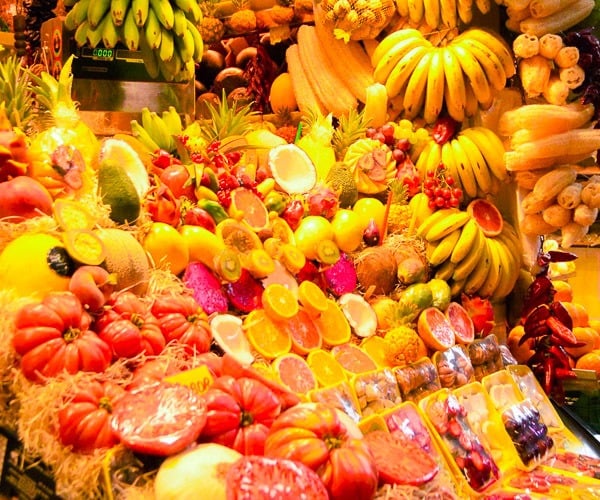 As you would expect on an island the seafood is fantastic. I particularly enjoyed the local white fishes and the tuna. The island is also well known for honey, almonds, olive oil and coffee.
As you would expect on an island the seafood is fantastic. I particularly enjoyed the local white fishes and the tuna. The island is also well known for honey, almonds, olive oil and coffee.
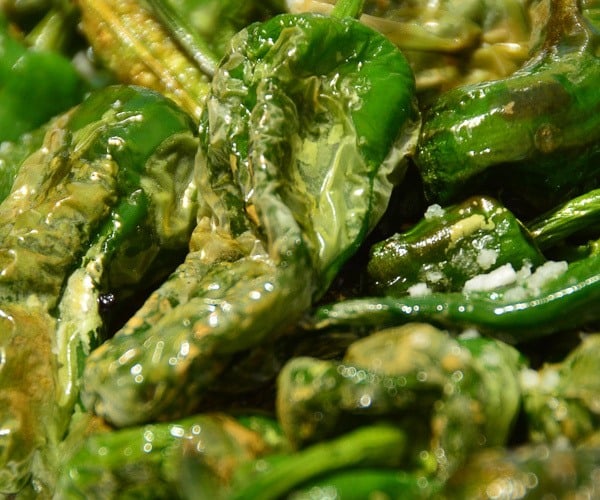 Finally, the Mojo flavoring is used in many dishes on the island. Each restaurant/home seems to have their own unique recipe with a large variety in the level of spice. I found it quite similar to a much more flavoursome paprika. This is a great item to purchase as a souvenir as I have found myself using it often in cooking at home!
5. Las Palmas Old Quarter: Vegueta
Vegueta is the old quarter of Las Palmas de Gran Canaria, the capital of the island. Its historic buildings have been standing for more than five centuries. The streets of the quarter were all constructed on angles. It is difficult to see streets until you are upon them and then it is even more difficult to see the end of the street.
Finally, the Mojo flavoring is used in many dishes on the island. Each restaurant/home seems to have their own unique recipe with a large variety in the level of spice. I found it quite similar to a much more flavoursome paprika. This is a great item to purchase as a souvenir as I have found myself using it often in cooking at home!
5. Las Palmas Old Quarter: Vegueta
Vegueta is the old quarter of Las Palmas de Gran Canaria, the capital of the island. Its historic buildings have been standing for more than five centuries. The streets of the quarter were all constructed on angles. It is difficult to see streets until you are upon them and then it is even more difficult to see the end of the street.
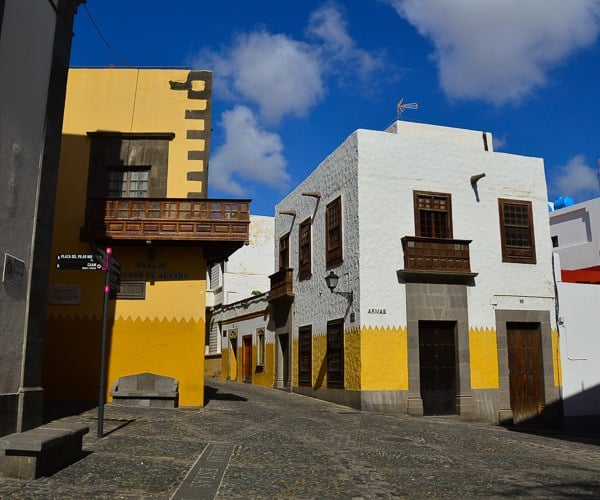 The reason for this is that the town was designed to evade potential invaders. This type of layout made the quarter confusing for anyone who was unfamiliar with it and gave the locals a considerable advantage. As a small island invasion was a common problem for Las Palmas throughout history.
The reason for this is that the town was designed to evade potential invaders. This type of layout made the quarter confusing for anyone who was unfamiliar with it and gave the locals a considerable advantage. As a small island invasion was a common problem for Las Palmas throughout history.
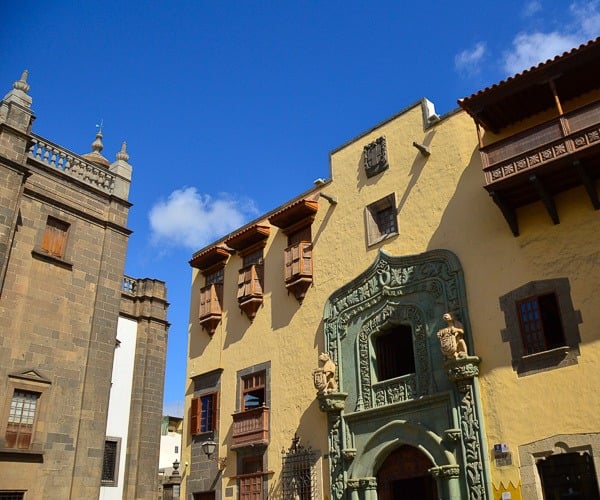 Wondering these twisty streets is part of the charm of the capital. The highlight of the visit for me was the Vegueta Market. The market opened in 1858 and is thriving today. I was so impressed by the care and attention the stall holders put into the appearance of their goods. Such high quality merchandising would be at home in the Harrods food hall!
Amanda OBrien is Owner of The Boutique Adventurer. The Boutique Adventurer focusses on luxury adventures in emerging destinations that end with a high thread count on the sheets in the evening.
If you would like to be a guest blogger on A Luxury Travel Blog in order to raise your profile, please contact us.
Wondering these twisty streets is part of the charm of the capital. The highlight of the visit for me was the Vegueta Market. The market opened in 1858 and is thriving today. I was so impressed by the care and attention the stall holders put into the appearance of their goods. Such high quality merchandising would be at home in the Harrods food hall!
Amanda OBrien is Owner of The Boutique Adventurer. The Boutique Adventurer focusses on luxury adventures in emerging destinations that end with a high thread count on the sheets in the evening.
If you would like to be a guest blogger on A Luxury Travel Blog in order to raise your profile, please contact us.Did you enjoy this article?
Receive similar content direct to your inbox.


I would never have imagined Gran Canaria to be a foodie destination either. I guess it depends on where you go and whether you can find the locals’ favourites. Are there are particular areas on the island that are best for food?
I know Simon – I was surprised as well! There are some fantastic restaurants on the main strip in Melonaras. Mercado del Puerto in Las Palmas is fantastic – it has a few small bars and restaurants. And don’t miss the little mountain towns like Teror and their Sunday markets!
What a great article, Amanda! I’m from Gran Canaria and I can confirm every single word you’ve written. Gran Canaria was famously known for sun tourism, average accommodations and cheap alcohol but the situation has completely reverted in the last 15 years. Rural tourism is an exquisite way to discover the island now and the the culinary offer and cuisine is evolving constantly. If I can build anything on top of your great article, I would mention the north of the island to also eat fresh fish like Agaete and Bañaderos and visit the Tejeda town considered one of the most beautiful towns in Spain.
HI Dani! I am so pleased that as a local you agree with my post! And thanks for the fantastic builds – Tejeda was on my list but I didn’t get time to visit. thanks for your comments.
What a lovely and interesting place to visit. The Canaries truly have something special, something magnetic.
I really enjoy visiting Gran Canaria it really has some great places to kick back and relax. I agree the wine and food alone are worth the visit. It is so lovely to see that you have captured another side to Gran Canaria that I know and love. The markets are friendly and vibrant and a great place to meet locals. I hope this encourages more luxury foodies to take the trip.
I’m a huge fan of Gran Canaria. When you leave the airport it looks as if zig is just going to be a Costa Plastico with all the pomytunnels in front of arid brown mountains but there is far more to the place.
For an island it has got so much going on that it is almost a continent. The North of the island gets most of the rain and has a very different climate. But as you travel through the mountains you get little pockets of micro-climates which results in a huge variety of crops. Did you know that Gran Canaria even grows coffee?
Such an amazing article Amanda, I am glad that I found your article about Gran Canaria otherwise I could have missed the other side beauty of this island. Previously, I thought that Gran Canaria is all about dunes, beaches, and its annual carnivals. Seriously, I am surprised to know that Gran Canaria is also a foodie destination. The Pictures are so beautiful created more excitement to visit Gran Canaria as soon as possible.